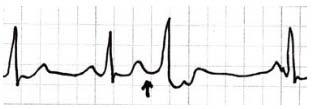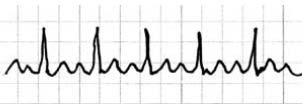Latest Version: 6.0
Question: 1
When using the SPIKES mnemonic for delivering bad news to a patient, the initial S stands for:
A. setting up the interview.
B. summarizing the plan.
C. satisfying needs.
D. selecting approach.
Question: 2
Answer: A
When planning for a patient's discharge, the gerontological nurse recognizes that most older adults live in:
A. long-term care facilities.
B. assisted care facilities.
C. their adult children’s homes.
D. in their own homes.
Question: 3
Answer: D
Alow income patient receiving home care states that she has been taking her diuretic regularly, but the nurse notes the patient has increasing peripheral edema and weight gain, and when the nurse counts the pills, it is clear that the patient has taken only half of the prescribed doses. Which of the following is likely the primary factor in non-adherence?
A. Dislike of taking medications.
B. Medication cost.
C. Adverse effects.
D. Confusion about directions.
Answer: B
Question: 4
A 68-year-old male with COPD spends most of his time sitting in a chair and complains of increasing weakness and intolerance to activity. Which exercise regimen is most likely to increase the patient's ability to carry out activities of daily living?
A. Arm and upper body exercises.
B. Isometric exercises.
C. Leg and lower body exercises.
D. Walking.
Question: 5
Answer: C
When reviewing a patient's food diary, the gerontological nurse notes that the patient has increased intake of foods high in sugar and high in sodium. The most likely reason for this is:
A. patient preference.
B. underlying disorder.
C. less acute sense of taste.
D. cost of foods.
Question: 6
Answer: A
An outbreak of Clostridium difficile has resulted in 20 patients in a medical-surgical unit becoming infected. When assessing the outbreak, the gerontological care nurse determines that the breakdown in process that likely caused the outbreak related to:
A. ventilation.
B. handwashing.
C. housekeeping.
D. food handling.
Question: 7
Answer: B
Which of the following electrocardiogram tracings indicates a need for immediate treatment?




Question: 8
Answer: B
The gerontological nurse recommends that a patient with low social security income and few assets apply for Supplemental Security Income (SSI) through CMS. In order to qualify for SS], an individual's assets may not exceed:
A. $1000.
B. $2000.
C. $3000.
D. $4000.
Answer: B
A. B. C. D.Question: 9
Under which circumstance may facial recognition serve as patient identification under the Joint Commission's National Patient Safety Goals?
A. Under no circumstances.
B. When the nurse has previously cared for the patient.
C. When a family member confirms the patient's identification.
D. Inthe patient's home with continuing one-on-one care.
Question: 10
Answer: A
A 65-year-old patient who is a retired pianist complains of stiffness and pain in the hands, and on examination the gerontological nurse notes enlargement of the distal interphalangeal joints and the proximal interphalangeal joints on the dorsal surface but normal metacarpophalangeal joints. Based on these findings, the gerontological nurse believes the probable diagnosis is:
A. gouty arthritis.
B. fibromyalgia.
C. osteoarthritis.
D. rheumatoid arthritis.
Answer: C

